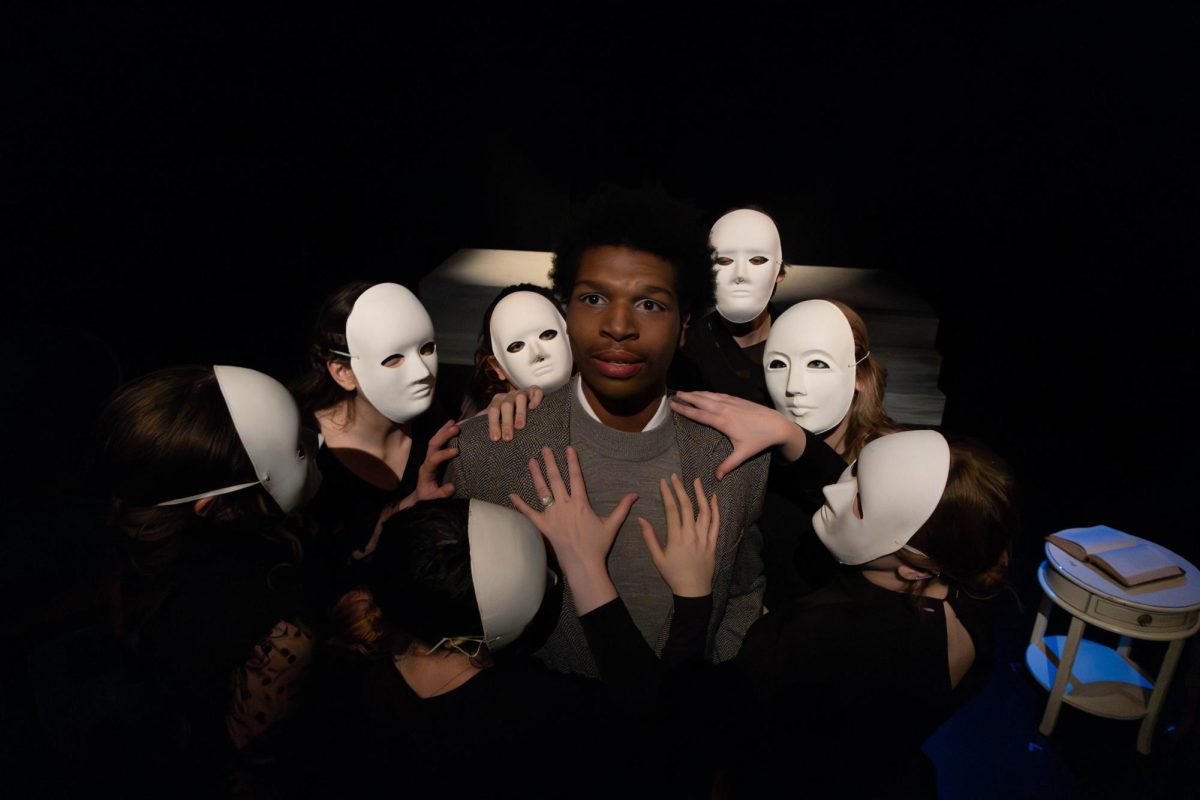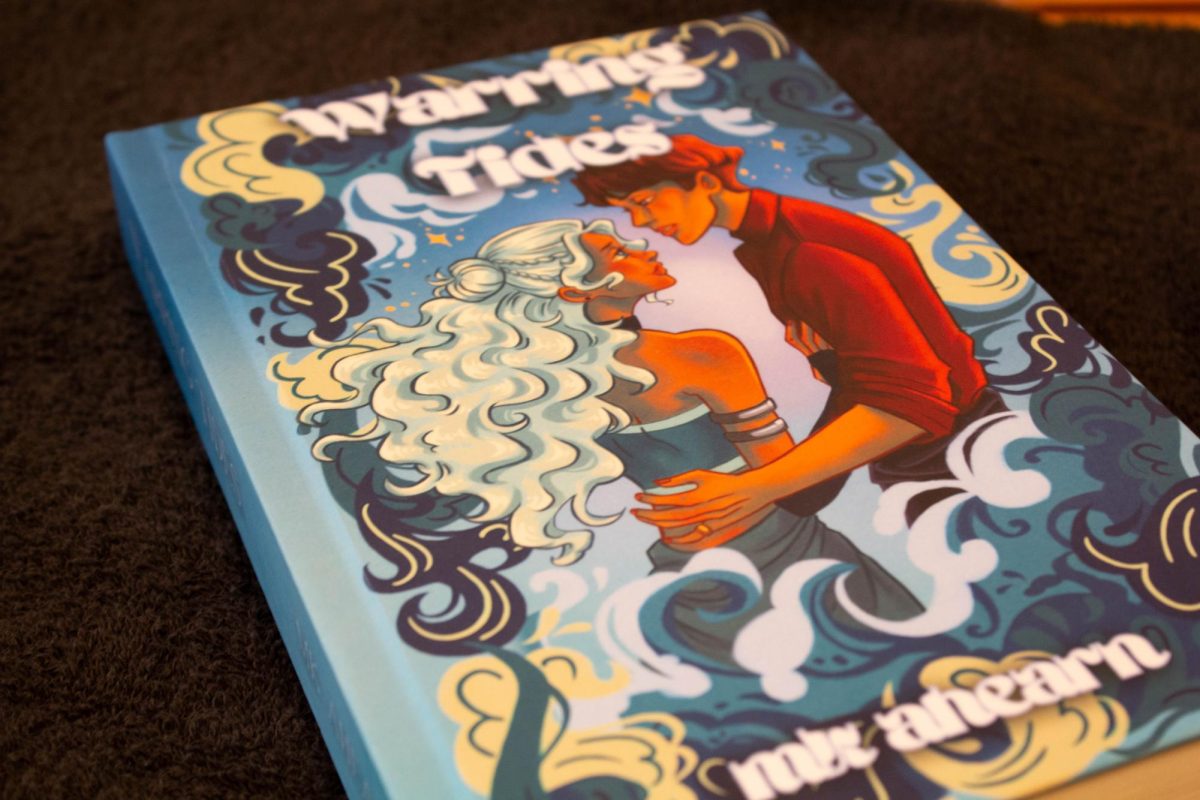Over the weekend, Bridges Theater Company held “The Disappearance of Arthur Warding” in the Rauh Theatre in the Pittsburgh Playhouse. The show, written by Point Park student Thomas Smith, follows the story of Arthur Warding and his acquaintances in a retelling of an expedition of the supernatural and macabre.
Act one started with a beautiful set design of a living room and a beginning monologue told by Professor Charles Blackburn, played by Christopher Rone.
Rone did an amazing job in act one, which is the only act that he plays Charles Blackburn in. Through incredible dialogue and real tears, he proved how great of an actor he is.
The beginning monologue, told beautifully and in the future, set the exposition up really well.
The time aspect in the play was a little confusing, but after a while, it made more sense. This act also seemed really slow at first, but it was important for setting up the plot. It ramped up heavily towards the end of the act.
The act also introduced us to Arthur Warding, an upbeat, almost arrogant person who presents his new findings of ancient text, which appeared to him in a dream, to Charles Blackburn. Warding, played by Elijah Corbin, gave an incredible performance to his character and really brought him to life.
All of the main characters were introduced in this act. Gloria McKinney, played by Morgan Kivlan, is a teacher’s assistant whose studies pertain to the ”combination of anthropology and mythology.” Set up to be one of the main characters in acts two and three, Kivlan’s portrayal of McKinney was absolutely perfect.
Some memorable scenes of the first act include the scene where McKinney told Warding about her studies was made comical by Warding saying, “So, you study religion?”
In a later scene, Warding tells McKinney about the dreams he had, which started the worsening of Charles Blackburn’s dementia. This leads to a memorable quote said by McKinney: “There are no madmen that dream, Mr. Warding.”
Charles Blackburn’s wife, Linda Blackburn, played by Devyn Amigh, was portrayed in an very interesting and unique manner. Despite not having many lines, Amigh gave an exceptional performance as Linda and as one of the shadows, who had a terrific solo dance scene in act three.
Amigh’s performance showcased Linda Blackburn’s protectiveness of her husband. It also showed the character’s emotional side, which can be seen as a bit manipulative to Warding, but that’s subjective to the viewer.
The last character, Jane Blackburn, played by Bianca Dixon, is the daughter of Charles and Linda, and ultimately became Warding’s love interest. She eventually moves away from home with him and marries him.
Jane Blackburn also didn’t have many lines, but Dixon’s performance was instrumental in setting up her character.
Linda and Jane Blackburn are both mysterious in their own ways, but it’s clear that there’s a familial love between them and Charles Blackburn.
Towards the end of the act, Charles Blackburn’s dementia worsened. This is shown by the shadows in his dream, which are played by various actors in blank, white masks, creeping around the stage.
In a scene where Linda Blackburn is comforting him, Charles Blackburn says, “Linda, I’m not well. I can’t find my maps.” This adds a sense of suspense and urgency.
Act two began in a speakeasy, where Warding and McKinney met to discuss the expedition to find an ancient tomb. Through some bickering and negotiating, McKinney reluctantly joins Warding on his adventure.
McKinney then took the spotlight, continuing the monologue that was prevalent throughout the play. The use of lighting and the illusion of time freezing during the monologue added a lot to McKinney’s character.
This act also introduces the audience to another character, Virginia Booker, also played by Dixon. After introducing herself to Warding, they both left the speakeasy together, leaving the audience to wonder about Jane.
This act was a bit slower, but still important to the plot nonetheless and was incredible.
Act three was where the play really ramped up in suspense, comedy and even a hint of horror.
This act is set in the wilderness, with McKinney and Warding searching for the tomb mentioned in the previous acts.
This act also utilizes the different entry points of the Rauh, having both Warding and the shadows utilizing every entrance in the act. The act featured scenes of Warding navigating the tomb while calling McKinney on a wire phone. This gets more suspenseful as Warding finds more discoveries and more shadows creep around the scene, with one of the creepiest ones peeking around the corner of a platform representing a hill mound.
Navigating through the tomb, Warding discovers gold and celebrates. Proceeding further, he finds an altar and smells iron, hinting at the scent of blood. After a while, he finally sees the shadows.
What follows is the best performance from Corbin, Kivlan and the shadows.
As the shadows converged on Warding, the wire phone rang again. After McKinney answered, there was a collective “Hello” from the shadows, which generated a shocked gasp from the audience.
The scene went deafeningly silent, and then transitioned to the sound of heartbeats as McKinney saw the shadows.
The final part of the play is a dance sequence which was shocking and impressive. The shadows danced with and around Warding and McKinney.
Harkening back to the memorable quote of act one, Warding shouted, “There are no madmen that dream!” at the end of the scene.
Overall, this show was amazing and is definitely worth rewatching. The performances from the talents are all incredible and are worth celebrating. “The Disappearance of Arthur Warding” was beautifully written and executed, really bringing the script to life and creating the perfect blend of suspense, mystery, comedy and horror.
Smith should be absolutely proud of himself for the work he created.









